
Windows XP, the personal computer operating system produced by Microsoft as part of Windows NT family, has finally meet its end. Microsoft stops it supports to the popular operating system on April 8th, 2014. The software giant pulls the plug for the still ubiquitous computer operating system that has been around for almost 13 years, an eternity in tech terms.
The end for Windows XP technical support leaves hundreds of millions of computers vulnerable to hackers and other security threats. Without patches or supports, Windows XP will no longer receive updates, and whatever security settings are in place on the computers that has them will stay that way. Microsoft recommends that XP users upgrade their operating systems to Windows 7 or the newer Windows 8, or buy a new computer with the new operating system installed in it.
"If you continue to use Windows XP after support ends, your computer will still work but it might become more vulnerable to security risks and viruses," Microsoft says on its website. "As more software and hardware manufacturers continue to optimize for more recent versions of Windows, you can expect to encounter greater numbers of apps and devices that do not work with Windows XP."
Microsoft is also ending its support for Office 2003 software suite.
Windows XP for the Governments, Banks and Large Companies
On April 14, 2009, Microsoft announced that Windows XP was entering the Extended Support phase where the company continued to provide security updates every month for the operating system while free technical support, warranty claims, and design changes were no longer being offered. Microsoft also said that the Extended support will end on April 8, 2014, over 12 years since the release of XP; normally Microsoft products have a support life cycle of only 10 years.
Although Microsoft's life cycle policy only guaranteed its support to April 8, 2014, after which Windows XP was declared end-of-life. Microsoft will no longer provide any support for XP users unless they have a paid "Customer Support" plan. Microsoft still provides "critical patches" to customers subscribing to this plan. Updates for Security Essentials virus definitions and updates for Malicious Software Removal Tool (MSRT) end in July 14, 2015. Windows XP Embedded SP3 is supported until April 2016, and Windows Embedded Standard 2009 (an updated version of XP Embedded released in 2008) is supported until January 2019.
Microsoft gives support for several market segments, including enterprise environments, within specialized equipment which cannot easily be upgraded (such as ATM). Since more than 95 percent of the ATM bank machines in the world run on XP, switching to other operating system is not an easy task. Plans were being made by several ATM vendors and their customers to migrate to Windows 7-based systems over the course of 2014. Vendors have also considered the possibility of using Linux-based platforms to give them more flexibility for support.
Ending XP's support will fuel piracy. And China is the first thing that comes in mind. The Chinese government had concerns that the impending end of support could affect their anti-piracy initiatives with Microsoft, as users would simply pirate newer versions rather than purchasing them legally. Chinese government officials formally requested that Microsoft extend the support period for XP for these reasons but Microsoft did not comply.
By 2014, XP is still installed on roughly 500 million computers worldwide - enough for about one out of every five desktop computers currently in operation. And with Microsoft ending its support on the operating system, hackers will have extra incentive to look for security flaws. In addition, if a flaw is found for Windows 7 or 8, there's a good chance a similar issue exists for XP as well. So when the fixes come out for Windows 7 or 8, hackers can go back to XP to look for an opening.
A final patch that Microsoft released for XP was rated critical. However, it's already being actively exploited despite only being discovered in late March.
"Anyone currently running Windows XP already faced a disproportionate risk of falling victim to malware," said Dave Emm, a Senior Research Analyst at security firm Kaspersky. "Effectively, every vulnerability discovered after 8 April will become a zero-day vulnerability - that is, one for which there is not and never will be, a patch."
"Windows XP users topped the list of victims cyber-thieves targeted," said Maik Morgenstern and Andreas Marx from the German AV-Test group, which rates and ranks security software. "Malware writers go for the low hanging fruits because it's a lot easier to infect systems running on an old Windows XP operating system compared to brand-new Windows 8.1, with all its built-in security features."
"We think we will see a lot of attacks for Windows XP within the next few months, but attackers will also always add exploits for other Windows systems just to catch those systems as well."
This has caused a concern among companies, banks and governments due to the large usage of XP in them. Many large companies and governments are paying Microsoft millions of dollars to have extended support contracts and have the company maintain compatibility for them until their system can be ready for newer versions of Windows.
"Some organizations will have particular concerns because they find it so hard to move away from XP," said Orla Cox, a Senior Manager at Symantec.
The UK government has signed a £5.5 million deal for extended support. Similarly, the Dutch government has signed a similar deal to obtain help for the 40,000 PCs running XP used by the nation's civil servants.
"While that is a risk to the users of those Windows XP systems, in aggregate and in the end, it's those users' banks and financial institutions that face the greatest risks," said Christopher Budd, the Threat Communications Manager at digital security firm Trend Micro.
"Banks should go as far as banning anyone who uses the software from accessing their networks or logging online", continued Budd. "We shouldn't fool ourselves into thinking that warnings alone will be sufficient. And as time goes on, this situation will become worse and worse."
However, the main concern for most XP users is that the operating system will have outdated protection. This can be solved with other options like alternatively use third party antivirus and firewall, as well as backing up files regularly just in case something happens.
13 Years of "Experience"
The development of Windows XP began in the late 1990s with the name "Neptune". It's built on the Windows NT kernel which was intended specifically for mainstream consumer use -an updated version of Windows 2000 was also originally planned for the business market. However, in January 2000, both projects were shelved in favor of a single OS codenamed "Whistler", which would serve as a single OS platform for both consumer and business markets. Whistler in beta version was released in October 2000.
On February 5, 2001, Microsoft officially announced that Whistler would be known as Windows XP, short for "experience".
Windows XP was a major advance from the MS-DOS based versions of Windows in security, stability and efficiency. Even though it was born well before smartphones and cloud services took over the tech landscape, an extraordinary number of consumers and businesses have clung to it despite Microsoft's best efforts to get them to upgrade to newer operating systems.
This is because Windows XP is known to have one of the best performance in speed and intuitive user interface, massive hardware support and expanded multimedia capabilities. It was overhauled with a new visual appearance which completely change the appearance of the operating system if compared to previous versions of Windows.
Windows XP that has 3 Service Packs during its lifetime is still popular among users and was still the most widely used operating system until August 2012 when Windows 7 overtook it. In January 2014, it's reported that XP has a share of 29.23 percent in the operating system market.
Despite the introduction of newer versions, use of Windows XP remained widespread, due primarily to the poor reception of Windows Vista. Although sales of most XP licenses ceased in June 2008, Microsoft still continued to provide OEM licenses for use on low-cost devices.
Windows XP was the first operating system that propelled Microsoft as the business leader in the operating system market after the crisis in 2001.
The massive popularity of XP has made analysts to debate whether XP was just that "amazing", the sequels just weren't "worth the price and hassle", or people were just "lazy".
"It's an old operating system," said Tom Murphy, Director of Communications for Windows. "Think of the cellphone you were using in the late '90s compared to what you see today. XP doesn't do the things we expect from our PCs or devices today."
By ending its support for XP, Microsoft is having its consumers to dump XP. This is seen to be one of the largest chore than anyone could have predicted in tech history. About 40 percent of enterprises of all sizes still use Windows XP to some degree. And 7 percent of them runs XP on more than 80 percent of devices.
People may expect more from XP and hope it lasts longer, but Microsoft is clear that for just about everyone else, Tuesday is the end of the line as far as XP support goes.
"Almost a decade ago we told people that it was going to end, and it's going to end on that day," said Mark Kornegay, the General Manager for Microsoft in Los Angeles. "It was an incredible platform that enabled people to really have a rich experience on the web. It was still a very sturdy platform, it has done a lot of things, but it's reached the end of its life."
Boot Screen
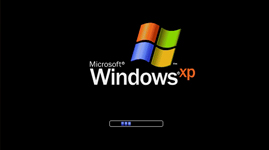
The Windows XP's startup (boot) screen is one of the most well-known screen in computer history. The plain black background with the Windows logo hovering on it is one of the places where users usually customize with their own themes.
Ctrl+Alt+Del
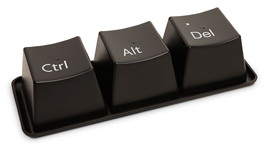
Ctrl+Alt+Del functionality implies that whenever the operating system hangs up. The button combination was made popular during Windows XP's reign in the industry.
The combination is also known as the "three-finger salute" was originally designed by David Bradley. The function of the key combination differs depending on the context but it generally interrupts or facilitates interrupting a function. For instance, in preboot environment or in DOS, Windows 3.0 and earlier version of Windows or OS/2, the key combination reboots the computer. Starting with Windows 3.1, the command invokes a task manager or security related component that facilitates ending a Windows session.
The combination button is now a computer jargon.
Windows Media Center
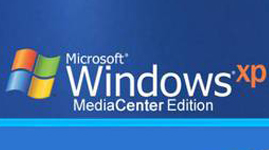
Windows Media Center is a digital video recorder and media player developed by Microsoft, and was first introduced in Windows XP.
It is an application that allows users to view and record live television, as well as organize and play music and videos.
Media Center can play slideshows, videos and music from local hard drives, optical drives and network locations. Users can stream television programs and films through selected services and content can be played back on computer monitors or on television sets through Windows Media Center Extenders.
Originally codenamed "Freestyle", Windows Media Center was first included with a special edition of Windows XP called Windows XP Media Center Edition.
System Restore
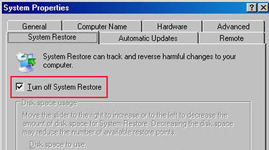
System Restore is a feature in Microsoft Windows that allows the user to revert their computer's state (including system files, installed applications, Windows Registry, and system settings) to that of a previous point in time, which can be used to recover from system malfunctions or other problems.
Although first included in Windows ME, it has been made popular since Windows XP. The amount of disk space System Restore consumes can be configured, and since Windows XP, the disk space alloted is configurable per volume and the data stores are also stored per volume. File are stored using NTFS compression and a Disk Cleanup handler allows deleting all but the most recent Restore Point to free up disk space.
NTFS
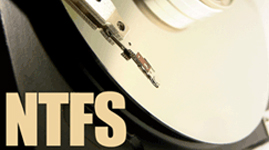
Windows XP is known for its quick delete function. Initially it would take long hours deleting files because users had to wait endlessly till each file was deleted. But with XP, the quick action of deleting takes place by clearing the NTFS (New Technology File System) trees.
To make this happen, NTFS has several technical improvements over FAT and HPFS (High Performance File System) such as improved support for metadata, and the use of advanced data structures to improve performance, reliability, and disk space utilization, plus additional extensions, such as security access control lists (ACL) and file system journaling.
NTFS is the default file system of Windows NT family, which includes Windows XP. Version 3.1 was released with XP in autumn 2001.
Application Compatibility Mode
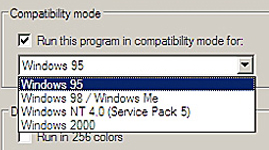
Another major improvement in Windows XP is in the realm of application compatibility. Although many of XP's successors can run softwares that previously ran on Windows 85/96, there are still many of these programs that can't run smoothly.
Windows XP has introduced Application Compatibility Mode, which allows the operating system to make an application "think" that it's running on an older version of Windows.
This very useful and effective feature is particularly valuable for organizations that have had custom applications developed on older Microsoft operating systems. However, it does not work in every instance. Some older, DOS-based programs will still choke when run in Application Compatibility Mode.
Redesigned Interface and Features
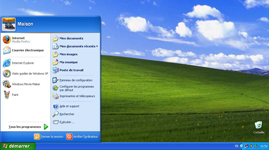
Windows XP introduced a significantly redesigned graphical user interface. XP introduced alpha compositing effects, drop shadows, ClearType font appearance, new icons, and "visual styles", which completely change the appearance of the operating system. XP was the first version of Windows to use product activation (Windows Product Activation) in an effort to reduce software piracy.
Windows XP also was the first to introduce Windows Easy Transfer to give users the ability to transfer personal files and settings between computers. The aim of this program is to help migrate from an earlier version of Windows to a later one.
Task grouping was introduced starting XP. The feature shows both grouped and individual items on the taskbar that starting this version, can be "locked" to prevent accidental changes. The notification area also hides "inactive" icons by default. In this version of Windows, the Start menu received its first major overhaul, switching to a two-column layout with the ability to list pin and display frequently used applications, recently opened documents, and the traditional cascading "All Programs" menu.
Windows XP also has fast user switching, a feature on modern multi-user operating systems that allows users to switch between accounts on a single PC without quitting applications and logging out.
ATM with Windows XP
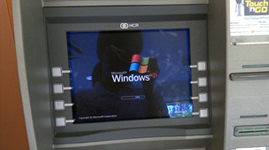
Not many people know this, but most of the world's ATMs run Windows XP. In the olden days, it wasn't that unusual to find ATMs that had crashed with a blue screen of death (BSOD), and actually it's still common today.
A conventional ATM consists of a Windows XP Embedded connected to a display, a secure keypad, cryptoprocessor and various other bits of hardware. The ATM boots up normally, then launches into a full-screen program that manages all of the tasks that a customer might want to carry out.
Due to its popularity, hackers and criminals have been exploiting ATM machines with malwares to empty it without a trace. Just like an ordinary PC, ATMs have USB sockets hidden somewhere within the machine case. These people can plug an infected USB sticks into the computer inside the machine that runs XP. They can do this without much of a problem if they know where to initiate the move.
Advise from Microsoft
Microsoft is advising Windows XP users to either install a newer version of Windows or buy a new computer. But before purchasing the operating system, users should check to see whether their computers can support a more recent operating system.
Users who plan to keep running Windows XP should copy their sensitive files to another storage device and delete them from their Windows XP machine so these files aren't accessible to potential hackers. Security experts also recommend disabling the computer's internet connection.
To get users to upgrade, Microsoft is offering Windows XP users a $100 gift card to buy a new Windows 8.1 machine.